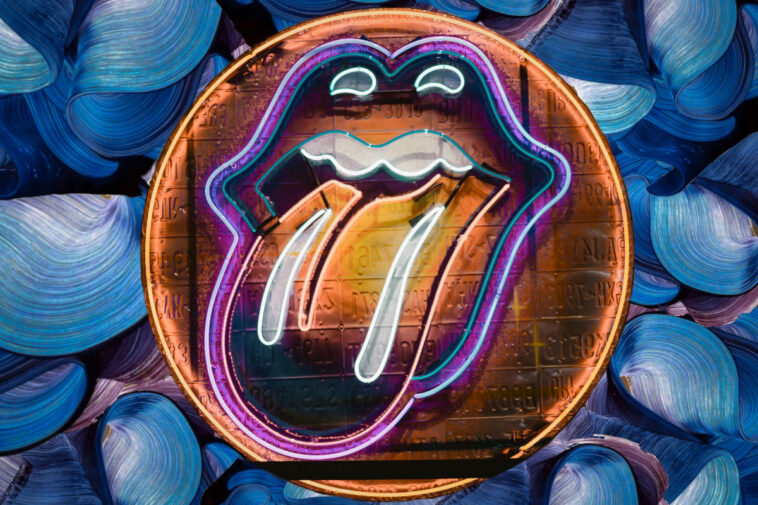Comparing Art Forms
Pop art and rock n roll art are both forms of creative expression, but they have distinct differences. Pop art is a style of modern art that uses recognizable items from popular culture as its subjects, such as advertisements, comic books, and movie stars. These items are often portrayed in a whimsical or satirical manner. Rock n roll art is often seen as an extension of the music genre itself; it usually takes the form of album covers or posters depicting musicians in performance. It tends to be bolder and more expressive than pop art, with bright colors and abstract designs to convey the energy of the music. Additionally, whereas pop art often has a tongue-in-cheek attitude toward its subject matter, rock n roll art typically exudes sheer enthusiasm for its chosen topic.
Origins of Pop Art
Pop art emerged in the mid-1950s as a reaction to abstract expressionism and other more traditional forms of modern art. While it shares certain similarities with its predecessors, pop art was an attempt to create a more accessible form of art by utilizing imagery from popular culture such as television, magazines, advertising, comic books and music. This style of art was heavily influenced by the growing popularity of rock ‘n’ roll music in the 1950s and 1960s. Pop artists often drew inspiration from their personal experiences with rock music and incorporated elements such as album covers and song lyrics into their work.
In contrast to abstract expressionism which focused on expressing emotion through color, shape and line, pop art used recognizable images from popular culture to make a statement about society’s preoccupation with celebrity culture. Unlike rock ‘n’ roll artwork which is often rooted in rebellion or protest against authority, pop art aimed for a more subtle critique of consumer culture by utilizing familiar images as commentary on societal trends. Pop artists favored bold colors that were paired with bright graphics to help convey their message. By using recognizable symbols that could be easily understood by viewers all over the world, they were able to raise questions about modern life without explicitly criticizing it directly.
Origins of Rock n Roll Art
Rock n Roll art is a unique form of art associated with the rock n roll music genre. It has its origins in the 1950s and early 1960s, when popular music began to take on a new sound and style. Rock n Roll art typically features bold colors and visuals that reflect the energy and attitude of the music itself. Unlike pop art which often features recognizable images from popular culture, Rock n Roll art uses abstract shapes, patterns, and symbols to convey emotion or ideas related to the rock genre. For example, some artists use bright colors or lightning bolt shaped lines to represent electricity or power – both characteristics that are central to an understanding of rock music. Other visual elements may also be used in Rock n Roll art such as stars, skulls, guitars, flames, wings – all symbols chosen for their association with rebellion and freedom which embody the spirit of rock music.
Elements of Pop Art
Pop art is a visual art movement that emerged in the mid-1950s in Britain and the United States. It was a response to the austerity of abstract expressionism and focused on mass-produced popular culture such as advertising, Hollywood films, comic books, magazines and pop music. Rock n roll art is an umbrella term for artwork inspired by rock n roll music. This can include anything from album covers to concert posters to sculptures created as homage to iconic musicians or songs.
The key difference between pop art and rock n roll art lies in their elements: Pop art uses recognizable imagery from popular culture with bright colors and often times irony or satire to comment on modern life, while rock n roll art typically incorporates musical themes, lyrics from songs or references to musicians into its design. For example, a painting of Marilyn Monroe could be classed as pop art while a painting featuring Elvis Presley singing would be considered rock n roll artwork.
Unlike most other forms of modernist aesthetics which focus on individual form and composition, both pop art and rock n roll artwork draw heavily upon existing cultural themes, symbols, images and concepts rather than creating them anew. While they are both rooted in popular culture they approach it differently – one through commentary on the nature of fame while the other takes a more celebratory tone regarding its subject matter.
Elements of Rock n Roll Art
Rock n Roll art features a range of vibrant and bold colors, often with an edgy and intense feel. It’s heavily influenced by the music it represents, as well as the culture surrounding it. Artists often take inspiration from classic album covers, concert posters, or rock posters. The imagery used in rock n roll art is much more expressive than that found in pop art and includes elements such as skulls, flames, lightning bolts, and other symbols associated with rebellion or danger. Many works also feature images of iconic musicians from past to present such as Elvis Presley and Jimi Hendrix. Additionally, many artists will add their own personal touches to their work by adding things like graffiti-style lettering or textured layers for a more three-dimensional effect. In contrast to pop art which often uses flat colors and simple shapes for its designs; rock n roll artwork typically has a lot more detail because of its focus on musical expression.
Influence on Culture & Society
Pop art is a movement that emerged in the mid-1950s, focused on mass media and popular culture. It sought to capture popular culture through the use of bright colors and bold lines. Rock n roll, on the other hand, is an artistic style based on rock music. It was born out of an era of rebellion and revolution and often featured subversive subjects such as drug use or anti-war messages. Pop art was largely a commentary on consumer culture while rock n roll served as a form of expression for counterculture movements.
The two styles have had a huge impact on society and culture over the years. Pop art has become mainstream, influencing fashion trends and advertising campaigns around the world. Rock n roll has also had its own influence—it has helped shape attitudes towards gender roles, civil rights issues, personal identity, and political ideologies across generations. Both styles have been used to challenge conventional norms as well as to give voice to those who don’t always fit in with traditional values. While pop art is more associated with consumerism, both it and rock n roll are tied together by their ability to express ideas both within society itself but also outside it—using their artwork in order to push boundaries or create meaningful conversations about important topics like equality or human rights.
Comparison & Contrast
Pop art is an art form that developed in the mid-to-late 1950s and has its roots in Dadaism and Surrealism. It uses everyday objects, such as comic books, consumer products, advertising graphics, and television images for its subject matter. Pop art seeks to engage with the public through its use of bright colors and bold shapes. Rock n Roll art on the other hand is heavily influenced by punk culture. It celebrates rebellion against established conventions, often utilizing shock value to make a statement. The imagery used in this type of art includes rebellious symbols such as anarchy signs or skulls. Pop artists often attempt to capture the spirit of modern life while rock n roll artists strive to make an artistic statement about individual freedom. In addition to their different approaches towards imagery, pop art is typically more accessible than rock n roll artwork due to its appeal across multiple demographics whereas rock n roll artwork tends to be aesthetically more challenging which may limit its appeal among some audiences.
Distinctive Styles
Despite the overlap between pop art and rock n roll, there are several distinct differences in their styles. Pop art is often characterized by its use of bright colors and bold lines, which give it an eye-catching quality. Additionally, the work tends to be more abstract in nature with a focus on visual elements rather than themes or messages. Rock n roll art, however, often has a more gritty or edgy feel to it due to its focus on themes like rebellion and counterculture. Its artwork also tends to have a greater emphasis on symbolism as well as representations of real life objects or people. Ultimately, both pop art and rock n roll can create stunning visuals that capture different aspects of popular culture while still maintaining their own unique aesthetic.
Photo by Vale Arellano on Unsplash



